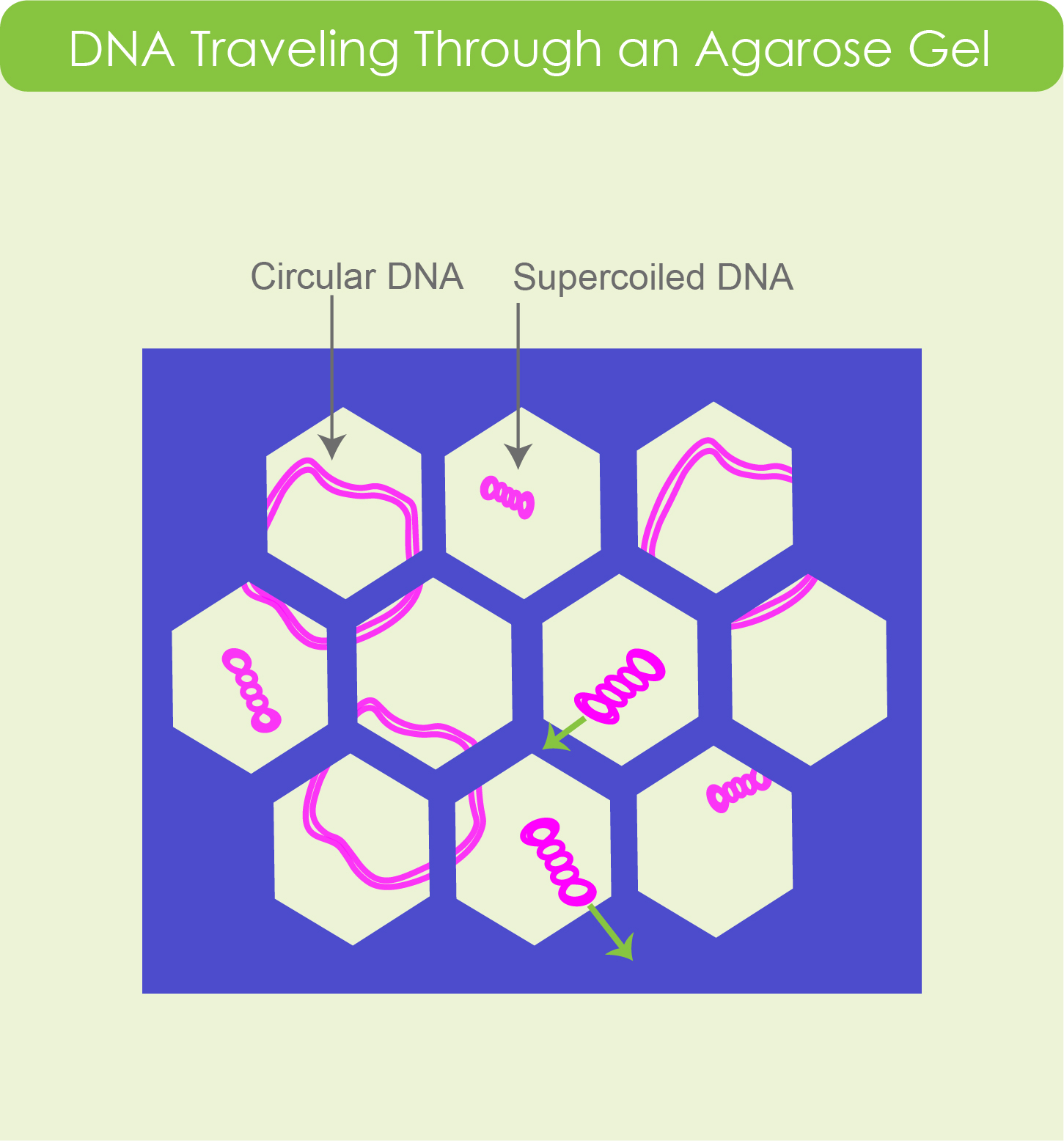Agarose LE (Molecular Biology Grade)
คุณสมบัติสินค้า:
SKU :
ปริมาณสินค้า (Quantity)
หมวดหมู่ : 1. Chemical and Reagents , Gold Biotechnology (USA) ,
แบรนด์ : Gold Biotechnology (USA)
Share
Product Description
Agarose LE (Low Electroendosmosis) is Molecular Biology Grade and is specifically designed for the superior separation of nucleic acids, with maximally crisp band resolution, and is also ideal for cloning and cloning related experiments.
GoldBio Agarose LE is refined in an advanced process that excludes the use of organic solvents. The result is a cleaner end-product with significantly reduced environmental impact. The agarose can be used for analyses of nucleic acids from 50 bp to 25 kbp, protein electrophoresis and various blotting protocols.
The low EEO of the agarose promotes increased electrophoretic mobility, yielding improved resolution and shorter run times. This also allows macromolecules and larger particles (subcellular fragments, viruses, etc.) to migrate more freely through the gel matrix. The consistently low EEO reduces band distortion (caused by counterflow) that can result from the presence of excessive sulfate-rich negative ions.
Agarose is a natural product that forms an inert matrix used in electrophoresis, chromatography and other molecular biology and biochemistry techniques. Likewise, it is neutral and easily derivatizable, so it is easy to bind to its structure proteins like enzymes, antigens or antibodies. Toxicity absence makes working with agarose very convenient.
Technical Specifications Molecular Biology Grade EEO (Electroendomosis): ≤0.12 |
Agarose LE Quick Answers:
What does LE in Agarose LE Mean?
Which agarose gel type should I choose?
How do you prepare agarose gel/ How do you dissolve agarose?
What percent agarose gel should I use?
How do I reuse or remelt agarose gel?
What volume agarose gel do you run?
What is an agarose gel?
Agarose is a polysaccharide that comes from red seaweed and has been processed in such a way that agaropectin has been removed. In molecular biology, this separated product, known as agarose, is used to separate fragments of DNA in a process called gel electrophoresis.
The molecular composition of agarose, which sort of resembles a mesh or net, helps slow down the movement of DNA to where smaller fragments travel through the agarose gel quicker, and larger fragments travel through the agarose gel slower.
Pictured below is a rendering of how an agarose gel might look at the molecular level. To the naked eye, an agarose gel looks like a clear, gelatin material. However, at the molecular level, an agarose gel resembles more of a porous substance or mesh. The second figure is an illustration that shows how smaller molecules would easily travel through the mesh-like makeup of agarose gel, whereas larger molecules will get caught and travel slowly.
During a specific period in which the agarose gel is run, researchers will be able to distinguish larger fragments of DNA from smaller fragments of DNA by looking at how far down the agarose gel their sample moved. Those bands closest to the well, which have not moved very far, are larger fragments of DNA. By using a molecular weight marker or DNA ladder, researchers are able to measure their DNA fragment sample against a standard ladder of different DNA fragments.
What does LE in Agarose LE Mean?
The LE in Agarose LE stands for Low EEO or low electroendosmosis, which describes the electrically influenced movement of material through porous material. A low EEO, or using Agarose LE will increase mobility, reduce band distortion that is caused by counter flow, and provide better resolution. Low EEO Agarose also allows larger particles such as viruses to migrate within the matrix.
Which agarose gel type should I choose?
Below is a table to help you choose which agarose gel type is suited for your experimental needs.
Bases | Agarose Type |
<1 kb | |
50 bp – 25 kbp | |
>1000 bp |
What is agarose used for?
Agarose gels are used in a method called gel electrophoresis, which electrically separates DNA fragments based on size, allowing researchers to determine their specific DNA fragment.
Agarose LE Gel Applications Include:
- Gel electrophoresis
- Nucleic acid analytical and preparative electrophoresis
- High electrophoresis mobility
- Blotting assays
- Protein electrophoresis such as radial immunodiffusion
Because the structure of an agarose gel, at the molecular level, is a matrix and porous, larger DNA fragments travel slowly through the gel, while smaller fragments travel quickly and therefore farther down the gel. These bands of DNA can be compared against a DNA ladder, allowing researchers to determine size.
Furthermore, understanding DNA fragment size, helps researchers validate their sample of interest. A simple example would be if a researcher knows they are looking specifically for a sample that is 1500 kilobases, but perhaps have five tubes with five different samples, the researcher can run them on an agarose gel, and then compare the samples and sizes.
How do you prepare agarose gel/ How do you dissolve agarose?
You can dissolve and prepare your agarose gel with these steps:
- Determine the concentration needed for your agarose gel.
- Measure out the required mass of agarose LE powder.
- Add the required volume of diluted TAE buffer to a flask that holds 2-4 times the volume needed for your agarose gel.
- Add your measured agarose powder to your flask.
- Use a magnetic stir bar to mix the solution.
- Once the solution is mixed, remove the stir bar. Place the flask in a lab microwave with a loose lid over the flask or cover the flask with plastic wrap (vent the plastic wrap with a hole).
- Heat the flask in the microwave in bursts of 30 seconds. Swirl your agarose mixture after each burst.
- Once the agarose powder is fully dissolved and the liquid appears clear, allow it to cool until it’s safe to touch with your bare hands.
- Once it is cooled, you can pour your agarose gel mixture into the gel mold with comb. Wait for the gel to cool until it solidifies.
- Gently remove the comb once your gel is cooled and solidified. Then you can load your DNA.
What percent agarose gel should I use?
The percent agarose gel used for electrophoresis depends on the size of DNA you’re working with. Below is a table showing what percent gel to use based on your DNA size.
Concentration (%) | DNA Size Resolution (bp) |
0.5 | 1,000 – 25,000 |
0.75 | 800 – 12,000 |
1.0 | 500 – 10,000 |
1.2 | 400 – 7,500 |
1.5 | 200 – 3,000 |
2.0 | 50 – 1,500 |
How do I reuse or remelt agarose gel?
An agarose gel can be reused by remelting the gel in the laboratory microwave. This helps save some money. However, it is not always advantageous to reuse your agarose gel.
![]()
Reuse your agarose gel when:
You’re just running routine gels or doing a demonstration.
![]()
It’s best not to reuse your agarose gel when:
You’re confirming findings, publishing results, cloning, sequencing, doing extractions, doing a Southern blot, or for polished work. Instead make a fresh agarose gel.
What volume agarose gel do you run?
The volume needed for your agarose gel depends on the size of your gel casting tray. Mini gels carried out on small trays use 40 mL agarose gel. The table below shows agarose gel tray dimensions and a corresponding volume range.
Gel Tray Dimensions (cm) | Agarose Gel Volume Range |
7 x 8 cm | 40 ml |
9 x 11 cm | 70 – 80 ml |
12 x 14 cm | 120 – 130 ml |
Product Specifications
| Catalog ID | A-201 |
|---|---|
| CAS # | 9012-36-6 |
| Storage/Handling | Store at room temperature. |
https://www.goldbio.com/product/868/agarose-le-molecular-biology-grade








